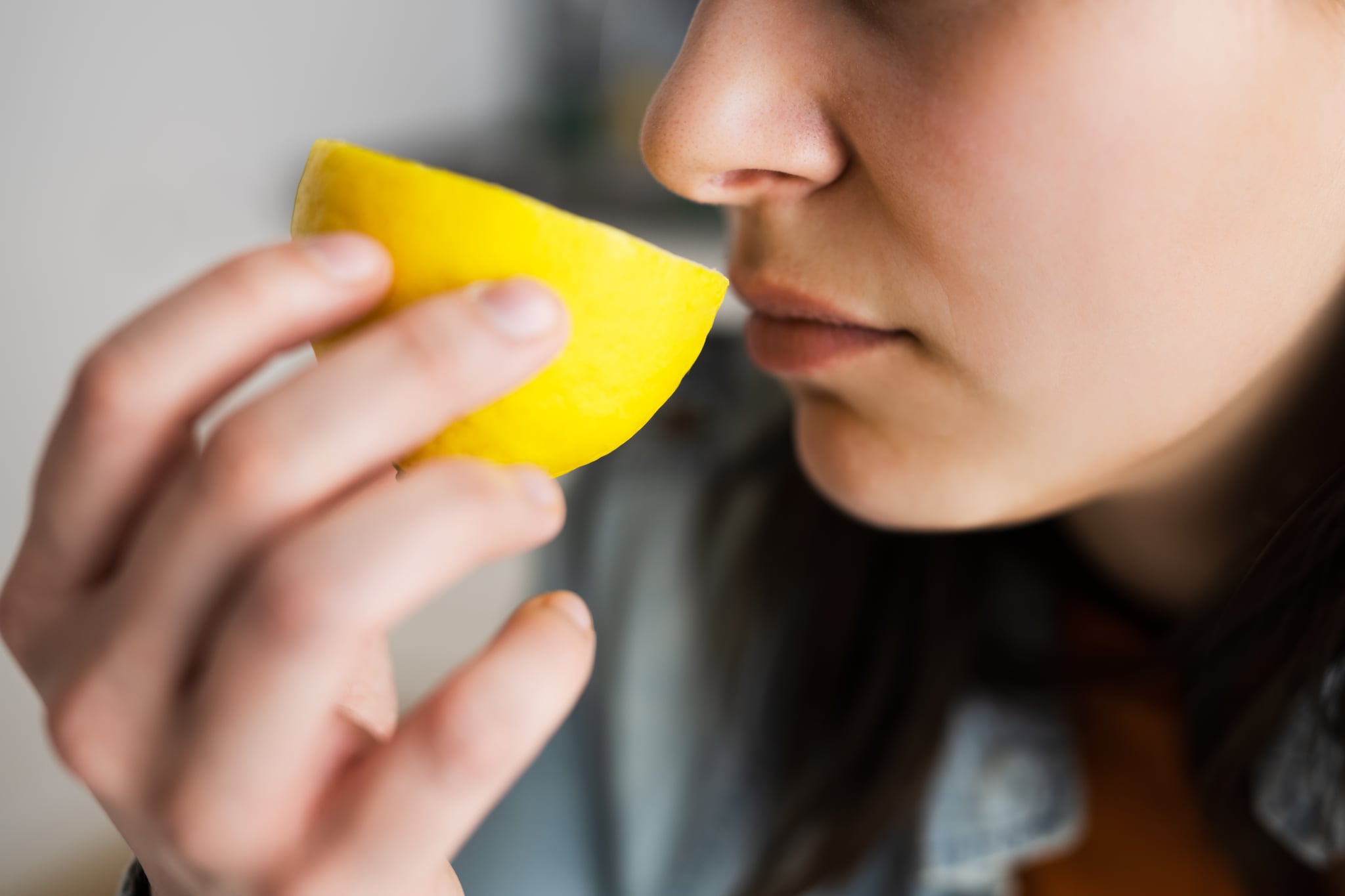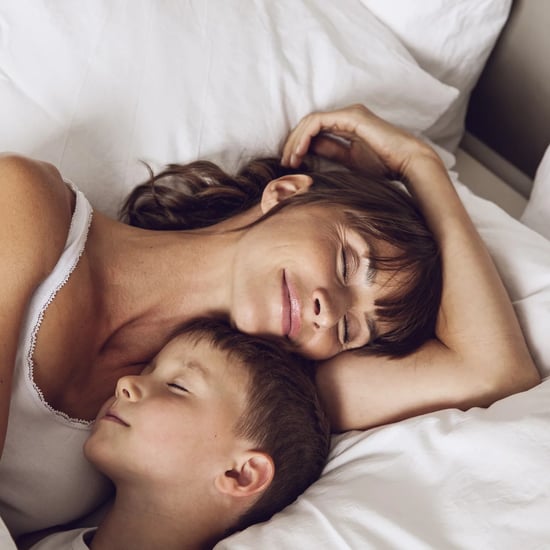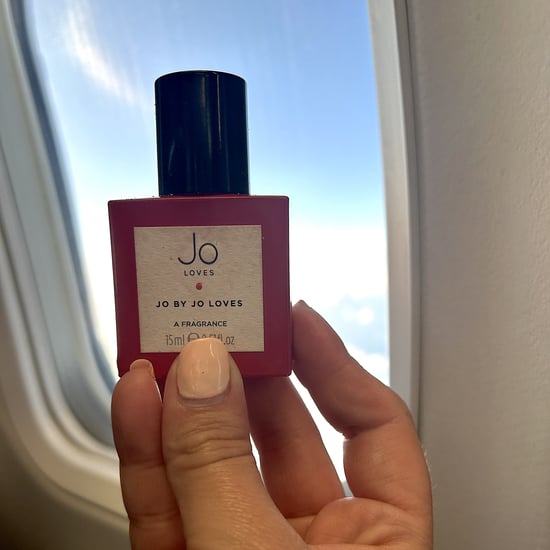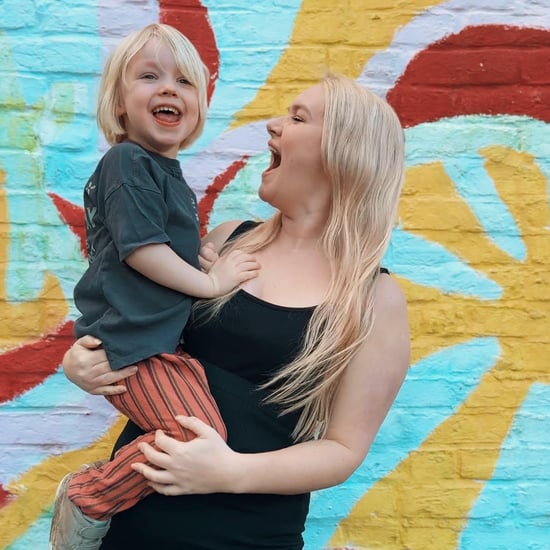How I'm Recovering My Sense of Smell After COVID-19
How I'm Working to Regain My Sense of Smell, Nearly 6 Months After Having COVID-19

I lost my sense of smell six days after the first tickle in my throat. By then, I'd already tested positive for COVID-19 and was safely isolated in my bedroom. I was wiping down my food tray with a Clorox wipe before setting it back out in the hallway for my husband, when I realised I could no longer smell the disinfectant. I was completely nose-blind to all smells for the next two weeks, and nearly six months later, my sense of smell is still distorted. While research is limited regarding the efficacy of smell rehabilitation, I'm now working with a specialist to maximise my recovery potential.
Anosmia, or loss of smell, is a common component of COVID-19. So much so, that it's considered a distinctive diagnostic indicator of the disease. Researchers believe that the virus binds to ACE2 receptors on cells in the nose, known as sustentacular cells. Infection of these cells disrupts the supply of nutrients to olfactory neurons, resulting in loss of smell. Fortunately, recovery has also been common. A study in the American Journal of Otolaryngology found that sense of smell was restored for more than 70 percent of COVID-19 patients after just one month.
However, it's been more complicated for me. When I started being able to smell again, it was faint and came in waves. Sweet smells, like vanilla and cinnamon, were easiest to perceive. Pungent or unpleasant smells, like garlic, onions, human waste, rubbish, mildew, rotting food, and natural gas, were noticeably absent, but I could live with that. I was encouraged that my smell was improving, and I was grateful to otherwise be well. My doctor had advised me that recovery could take time, so I was prepared to be patient.
Right before New Year's, when my wine started smelling like crayons, my frustration became palpable.
Three months post-COVID, unpleasant odours remained imperceptible. These scents, while undesirable, are considered warning smells. Not smelling them can have serious negative impacts on safety and hygiene. As the parent of two young sons, I need to smell if something is burning, rotten, or poisoned. Around this same time, I was also noticing smell distortions. Coffee suddenly took on the aroma of burnt sawdust. Citrus fruits, like oranges and lemons, had a curdled, almost chemical smell. Sizzling bacon, sautéed onions, and seared beef produced a fatty, oily odour that I'd never smelled before, like cooked flesh.
As the holidays approached, my distortions continued to evolve. The odour of onions and garlic went from oddly fleshy to chemically pungent, and our Christmas ham smelled like a scorched vacuum bag as it warmed in the oven. Meanwhile, the scent of over-ripe cantaloupe emerged as a placeholder for anything that smelled "bad" to someone else. Feces, body odour, and bad breath, to which I'd been nose-blind for months, now emanated the same sickly-sweet smell of fermented melon. Right before New Year's, when my wine started smelling like crayons, my frustration became palpable. I was determined to keep eating and drinking things that no longer smelled good, but I was forgetting what they were supposed to smell like. This, I've learned, is known as parosmia.
Parosmia is the distortion of existing smells, a complaint often conveyed by people who've previously lost their sense of smell due to infection, trauma, or in my case, COVID-19. In a 2005 study, parosmia typically occurred within three months of a patient losing their sensitivity to smell. As they recovered, patients reported incorrect, often foul odours in place of pleasant ones. Common items affected included gasoline, tobacco, coffee, perfume, citrus fruits, melon, and chocolate. Cases of parosmia cited in the study ranged in length from three months to as long as 22 years. While this study was conducted 15 years before COVID-19 emerged, it was comforting to know that parosmia was nothing new, that I wasn't alone in my experience. Nevertheless, the level of uncertainty involved in recovery did not inspire confidence.
Another unfortunate side effect of my expanding parosmia was the negative impact on taste. The fundamental components of taste are perceived through fibres that innervate the tongue via three cranial nerves: the facial nerve, the glossopharyngeal nerve, and the vagus nerve. Even mid-COVID, when I couldn't smell at all, I could still perceive food as salty, sweet, spicy, or bitter, because the nerves of the tongue were unaffected. I could technically taste food, it just didn't taste all that good. That's because olfaction, or smell, is activated by both sniffing and eating.
Orthonasal olfaction occurs by inhaling odour through the nose. Retronasal olfaction is stimulated by the odours from food that enter the nasal cavity from the mouth. Much like the smell of simmering spaghetti sauce wafts upstairs from the kitchen, smells from the food you're chewing drift into your nasal passageways via the throat. Retronasal olfaction contributes to flavour, the intangible fullness and multi-sensory character of food. When I couldn't smell at all, the experience of taste was hollow and one-dimensional. With parosmia now filling in the blanks, my sense of taste was similarly distorted. Meals were like a Mad Lib; all the context clues might point to spaghetti, but the aftertaste was somehow caramel apple.
At four months post-COVID, I made an appointment with an otolaryngologist to determine what I could do to maximise my recovery. My doctor administered a "smell test" and conducted a clinical examination using a thin, rigid scope. During the smell test, I used the point of a pencil to scratch a small swatch of odourant on each page of a test booklet, then bubbled in my best guess about what I was smelling from a multiple choice set of four possible responses. On the one hand, I was excited to perceive a wider range of scents than I thought I could. I was no longer limited to sweet or pleasant smells only; I could smell bad odours, too. On the other hand, the test items that smelled unpleasant to me may not have been bad smells at all. For instance, I might sniff the swatch and smell motor oil, only to discover nothing close to it among the options I had to choose from. As expected, I scored poorly on the smell test.
During the clinical examination, my doctor administered a light anesthetic spray to each nostril before inserting the scope into my nose to check for inflammation. COVID-19 is known to cause various forms of inflammation throughout the body, a reaction often triggered by the body's immune response. Mild swelling was present, which could mean that inflammation was contributing to my ongoing olfactory dysfunction. I was diagnosed with severe hyposmia, or reduced sense of smell. My doctor prescribed a steroid nasal spray to reduce inflammation, along with a course of olfactory retraining or "smell therapy." A CT scan was also recommended as "best practice" to rule out any other cause of smell loss, such as a tumour. Because my loss of smell directly coincided with COVID infection, I opted to pass on the CT scan for now. With a price tag of $500 for a test not covered by my insurance, it seemed unnecessarily expensive, just to tell us what we already know: I lost my sense of smell due to COVID-19.
I'm now five months post-COVID. I've been using my nasal spray religiously and "practicing my smells" twice a day. According to my doctor, I could sniff any natural, non-chemical household item, but I've found that essential oils are the most convenient for me. They are highly concentrated, easy to store, less likely to rot than a lemon rind, and harder to accidentally ingest than the powder form of, say, crushed cloves. I sniff four essential oils — lavender, orange, tea tree, and peppermint — directly from the vials for two and a half minutes each, twice daily. I can now detect smells from farther away and in lower concentrations than I could a month ago. The distortion of citrus smells (orange, lemon, lime) has resolved so significantly, I've considered adding a shot glass of whole coffee beans to my therapeutic sniffing routine in order to combat that distortion. It's possible that the improvement I've experienced with citrus could have occurred naturally over time, but I'm sure the focussed smelling of orange oil didn't hurt.
Unfortunately, many smells I currently perceive still don't match the source. If I smell cantaloupe when I walk into my master bathroom, I know that something stinks, but it could be a dirty toilet, a mildewed towel, or a pile of sweaty workout clothes. "Stink" of all varieties has the same fermented melon smell. Likewise, many routine items continue to fall under unlikely categories of scent. My Ponds facial moisturiser smells like cookies. My hair products, shampoo, and soap oscillate between crayons and cantaloupe. Peanut butter smells like crayons or chemicals, while garlic and onions smell like chemicals or caramel. In fact, "gently caramelised" or "lightly charred" are the prevailing aromas of my distorted reality. It's like there's a muted electrical fire in my brain at all times, quietly smouldering from the effort of re-wiring the circuitry of olfaction.
Like my recovery, our persisting battle with COVID-19 will yield its share of successes and setbacks.
As my recovery continues, I'm cautiously optimistic. As we all know (and I've gotten tired of hearing), there's a lot we still don't know about this virus, its long-term effects, its rules and exceptions. Like my recovery, our persisting battle with COVID-19 will yield its share of successes and setbacks. I recently received my second dose of the COVID vaccine, which I consider a small personal victory. When I got in the car afterwards, I caught a fleeting whiff of coffee from the travel mug I'd left in the cupholder. It disappeared like a face in the crowd almost immediately, but it was coffee. Not burnt sawdust, but rich, roasted, coco-caramel-ly coffee. Sadly, I brewed a pot at home a few days later and was nearly rendered cross-eyed by the smell of turpentine. It was by far my least appealing interpretation of the "coffee smell" yet.
Newly vaccinated but still enduring smell distortions nearly six months after COVID infection, my situation reflects the larger moment we're in with this ongoing global pandemic. There's light at the end of the tunnel but still miles of road ahead, with no way of knowing — when we get there — if the coffee will smell like we remember.








